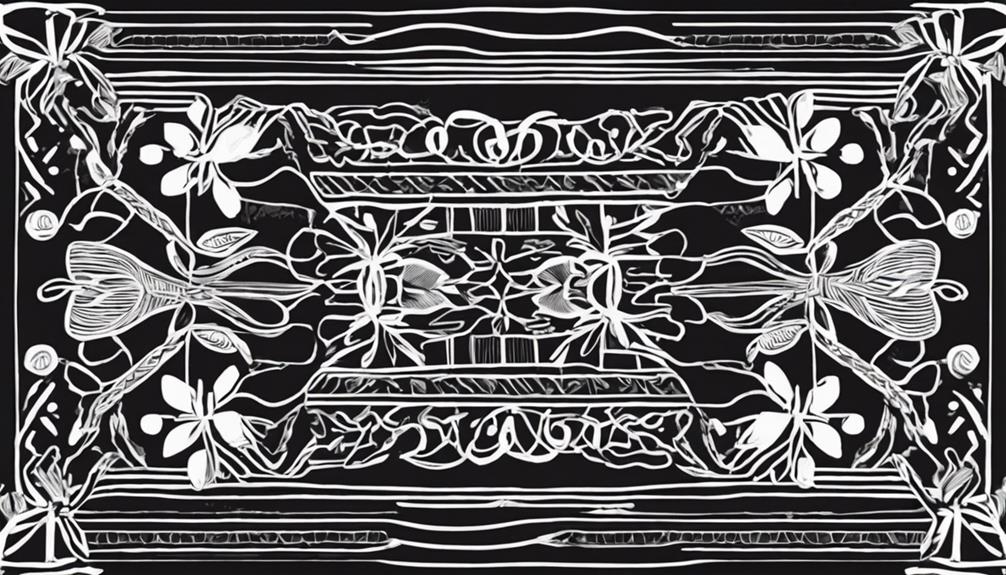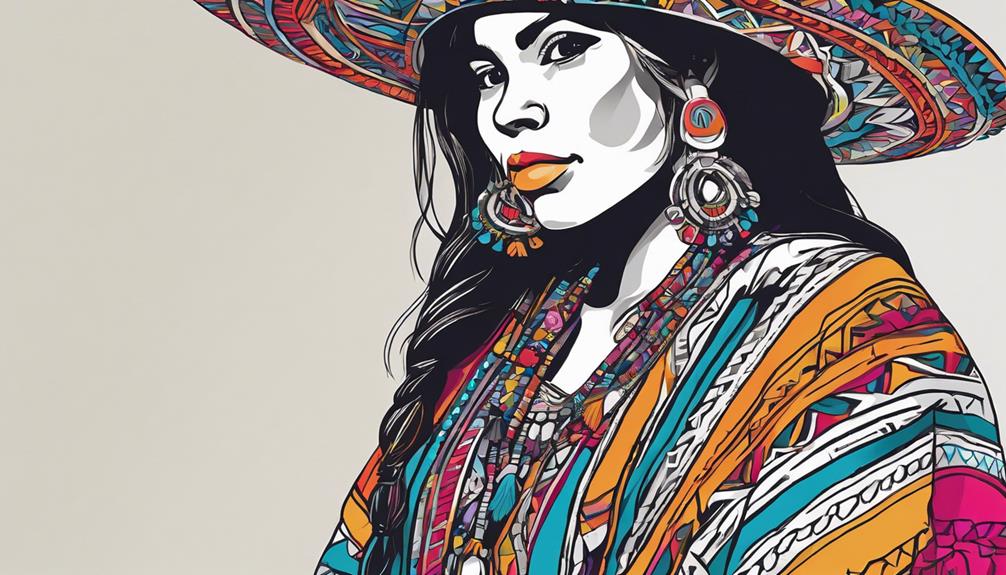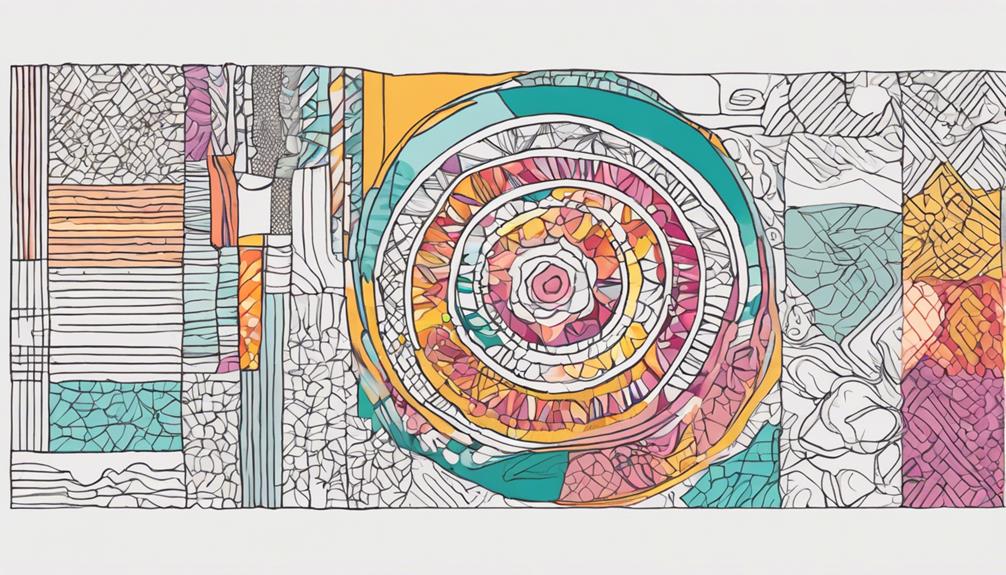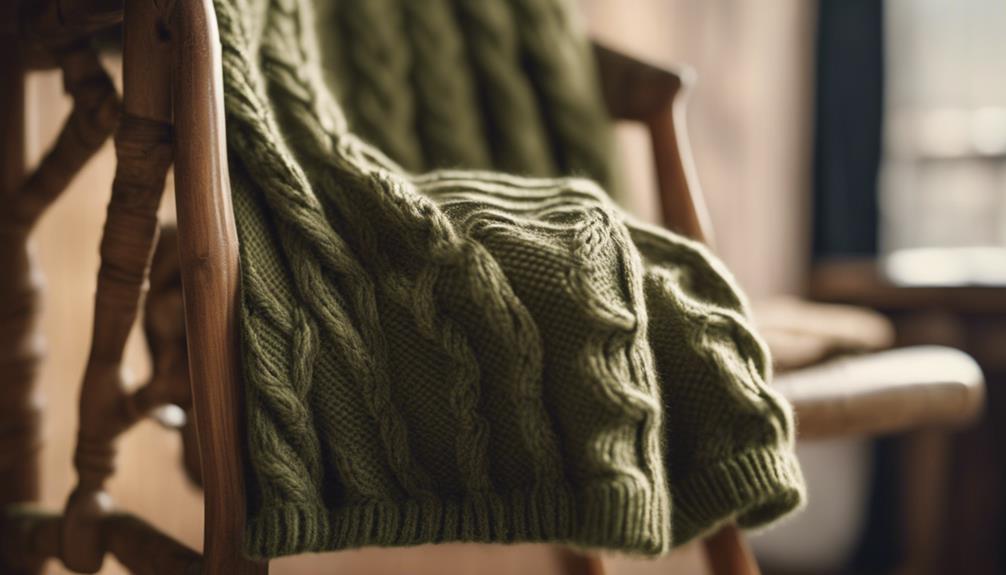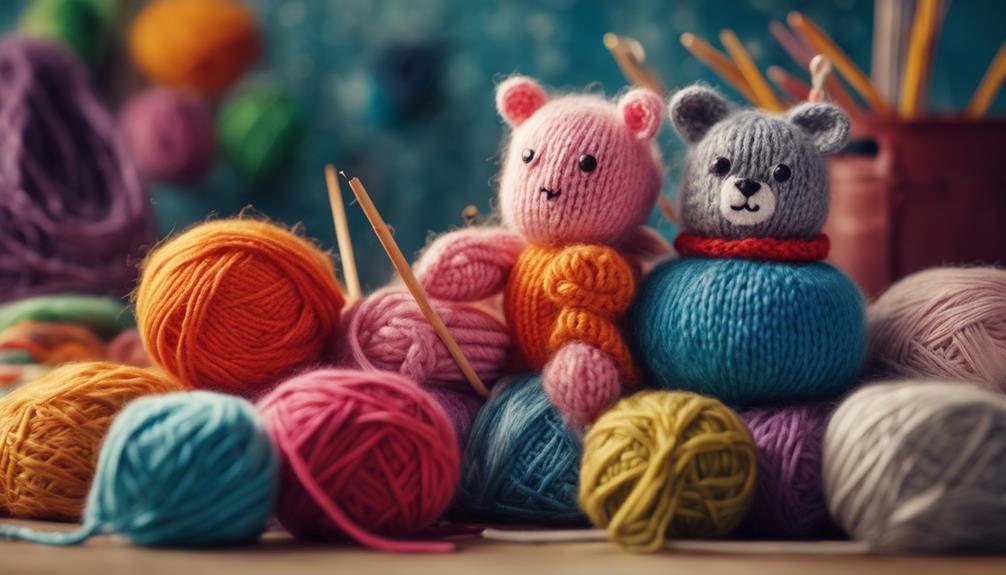In the dynamic world of textile art, painting on surfaces other than fabric stands out as a unique practice. This unconventional method allows artists to explore new techniques and create innovative works of art. It may be surprising, but using materials like wood, metal, or glass can bring a fresh perspective to artistic expression. Interested in seeing how artists are pushing the boundaries in the textile art field?
Key Takeaways
- Painting directly on a canvas without fabric is not typically considered a part of textile art.
- Sculpting with clay or metal is not a traditional technique within the realm of textile art.
- Digital media creation, like graphic design, is not a conventional practice in textile art.
- Woodworking, carving, or woodworking techniques are not commonly associated with textile art.
- Glassblowing or glasswork is not a typical method used in the creation of textile art.
Painting on Non-Textile Surfaces
When delving into textile art, painting on non-fabric surfaces provides artists the opportunity to experiment with various materials and textures. Textile artists throughout art history have expanded their works of art beyond conventional fabric mediums, venturing into the domain of canvas paintings, murals, and mixed media pieces that incorporate non-textile elements. By utilizing techniques such as acrylics, oils, watercolors, or spray paint on surfaces like wood, paper, metal, or glass, these artists can create unique and visually enthralling pieces that showcase their creativity and skill.
This extension beyond traditional textile materials allows artists to push the boundaries of their artistry, exploring new textures and surfaces to convey their artistic vision. While painting on non-fabric surfaces isn't exclusive to textile art, it serves as a complementary avenue for textile artists to diversify their creative repertoire and produce innovative works that mesmerize audiences with their depth and complexity.
Textile Art Techniques Overview
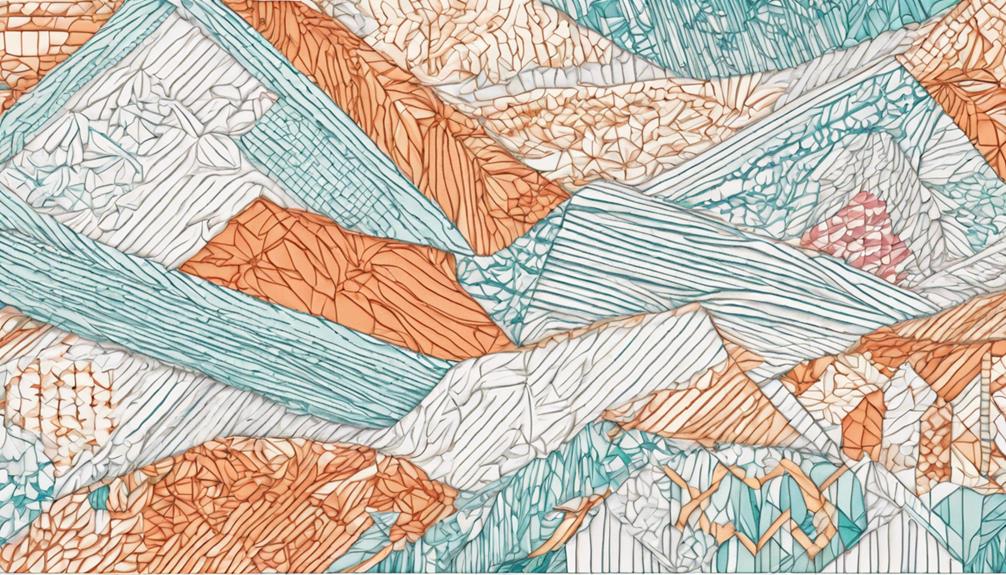
You'll explore the essentials of stitching, the significance of fabric manipulation techniques, and the various surface design methods in textile art.
From mastering basic stitches to creating intricate patterns through fabric manipulation, these techniques are fundamental to the art form.
Surface design methods like screen printing and batik offer artists a wide range of creative possibilities to experiment with in their textile artworks.
Stitching Basics Importance
Understanding the significance of stitching basics in textile art is fundamental for creating elaborate designs and patterns. Mastering stitching techniques opens up a world of possibilities for artists, allowing them to manipulate fabric with precision and creativity.
Here are some key reasons why stitching basics are vital in textile art:
- Foundation for Creativity: Stitching basics serve as the foundation for creating elaborate designs and patterns.
- Texture and Effects: Different types of stitches like running stitch, backstitch, and satin stitch are used to achieve various textures and effects in textile art.
- Dimension and Depth: Mastering stitching techniques enables artists to add dimension and depth to their artwork through elaborate stitching patterns.
- Material Influence: Knowledge of threads, needles, and fabrics is essential as they significantly impact the final outcome of a textile piece.
Fabric Manipulation Techniques
Curious about the intricate methods textile artists use to transform fabric into stunning works of art? Fabric manipulation techniques play a significant role in the world of textile art, offering artists a range of creative possibilities.
These techniques involve altering fabric to change its appearance and texture, allowing artists to add dimension and visual interest to their pieces. Common methods include pleating, smocking, gathering, tucking, quilting, and embroidery, each offering unique ways to manipulate the fabric.
By mastering these techniques, artists can create intricate patterns, textures, and even sculptural effects in their artworks. Fabric manipulation is essential for artists looking to experiment and push the boundaries of traditional textile art, enabling them to craft truly unique and innovative pieces.
Surface Design Methods
Exploring the world of textile art techniques, surface design methods encompass a variety of creative processes used to enhance fabrics with unique patterns and textures. These methods allow artists to manipulate the surface of fabrics through techniques such as dyeing, printing, painting, and embellishing textiles.
Here are some key aspects of surface design methods in textile art:
- Resist dyeing: Creating patterns by preventing dye from reaching certain areas of the fabric.
- Screen printing: Using a stencil and a mesh screen to apply layers of color onto the fabric.
- Block printing: Using carved blocks to stamp designs onto the fabric.
- Hand painting: Applying color directly to the fabric by hand to create customized designs.
Textile artists leverage these techniques to add visual interest, depth, and complexity to their creations, pushing the boundaries of traditional textile art and fostering innovation in the field. Mastering surface design methods is essential for artists to develop their unique style and produce captivating textile artworks.
Exploring Mixed Media Possibilities
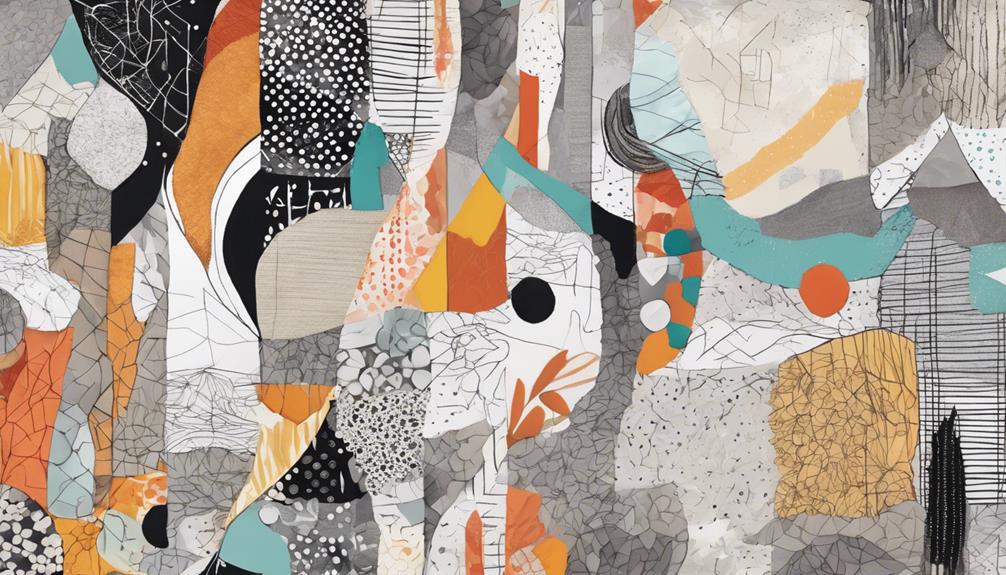
By combining a variety of materials such as fabric, paper, beads, and found objects, you can explore the diverse possibilities of mixed media in textile art. Mixed media techniques offer artists the opportunity to add texture, depth, and visual interest to their creations. Experimenting with different materials and techniques in textile art can help artists break free from the constraints of traditional methods and foster innovation.
| Advantages of Mixed Media in Textile Art | Examples |
|---|---|
| Adds texture and depth to artworks | Mixing fabric with beads |
| Provides visual interest and complexity | Incorporating found objects |
| Allows for experimentation and creativity | Using painting techniques |
| Enhances storytelling and aesthetic appeal | Combining stitching and collage |
| Pushes boundaries of traditional textile art | Exploring unconventional materials |
Unconventional Artistic Combinations
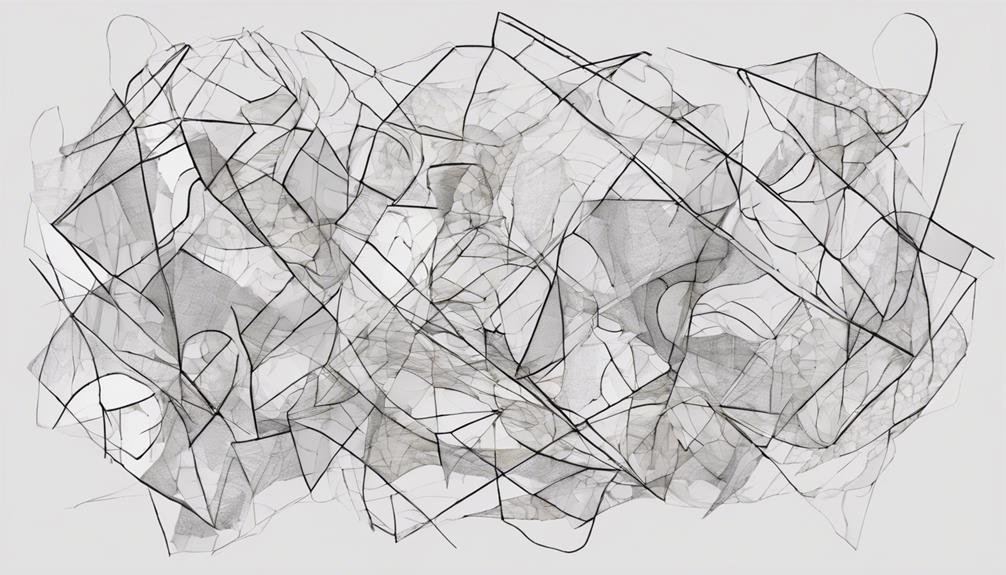
You can explore the fascinating world of unconventional artistic combinations in textile art.
Try incorporating unexpected materials like metal, plastic, or found objects into your textile pieces.
Experiment with blending traditional textile techniques with painting, sculpture, or digital media to create fresh and innovative artwork.
Unique Material Combinations
Through the innovative blending of various materials, textile artists create enchanting pieces that challenge traditional norms and inspire creativity. Experimenting with unconventional material combinations allows artists to explore new textures and structures, pushing the boundaries of traditional textile art.
By incorporating unexpected elements like metal, paper, plastic, and natural materials, artists infuse their creations with depth and fresh perspectives. These unique material combinations not only add interest but also create visually striking and thought-provoking pieces that defy conventional norms.
Textile art thrives on the creativity and imagination of artists who dare to mix and match materials in ways that captivate the viewer and spark conversations about the limitless possibilities of artistic expression.
- Metal
- Paper
- Plastic
- Natural elements
Unexpected Technique Pairings
Experimenting with surprising technique pairings in textile art opens up a world of possibilities for artists to create unconventional artistic combinations that challenge traditional boundaries and spark innovation.
By blending traditional embroidery with digital design elements, artists can infuse a contemporary twist into their textile pieces. Additionally, exploring unconventional materials like recycled plastics, metal, or even food items can result in truly unique and visually enchanting artworks.
Combining techniques such as quilting with painting or screen printing can lead to innovative and striking textile creations that push the boundaries of traditional textile art.
Collaborations between textile artists and professionals from other fields, such as architecture or technology, can bring about groundbreaking artistic combinations that fuse different expertise and perspectives. Moreover, integrating traditional textile methods with modern technology, like incorporating LED lights or interactive elements, can result in avant-garde pieces that redefine the possibilities of textile art.
Embracing unexpected technique pairings not only fosters creativity but also encourages artists to explore new avenues and challenge artistic norms in the field of textile art.
Innovative Medium Mixes
Incorporating diverse materials like metal, plastic, and found objects into textile art allows artists to create unique textures and visual effects in their artworks. Artists experiment with unconventional medium mixes to push boundaries and challenge traditional notions of textile art. By combining non-traditional materials with traditional textiles, creators can add depth, dimension, and a contemporary edge to their pieces. This innovative approach opens up a world of creative possibilities, enabling artists to break conventions and craft truly original and alluring textile artworks.
Mixing metal, plastic, and fabric in a single piece creates a striking contrast of textures.
Incorporating found objects like buttons, beads, or even recycled materials adds an element of surprise and whimsy to the artwork.
Combining unconventional mediums allows for the creation of intricate patterns and elaborate visual effects that draw the viewer in.
Experimenting with diverse materials in textile art results in dynamic and visually stimulating compositions that challenge traditional artistic norms.
Traditional Vs. Contemporary Textile Art
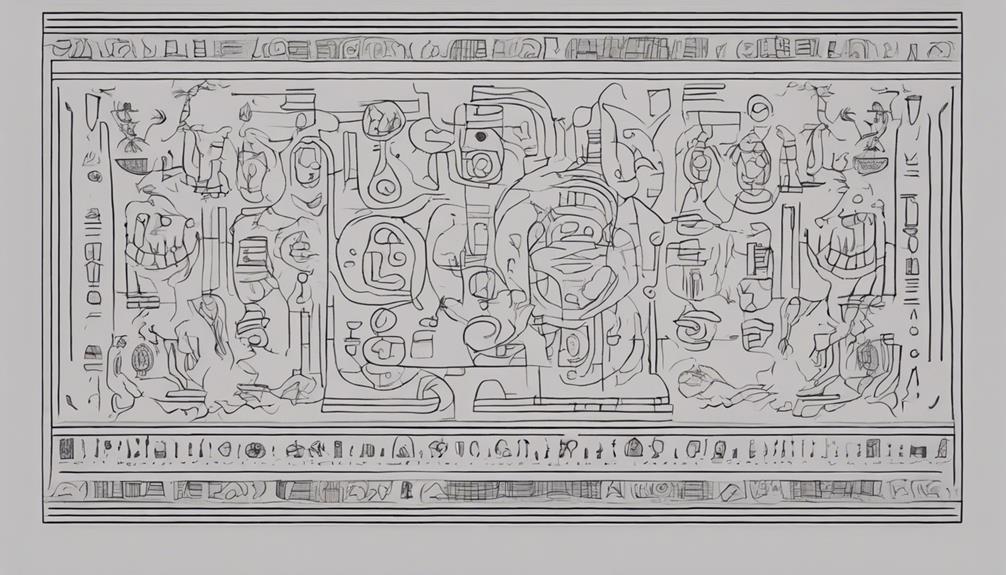
When comparing traditional and contemporary textile art, each showcases distinct characteristics and approaches to the medium. Traditional textile art, rooted in heritage, often employs techniques like weaving, embroidery, and quilting that have been passed down through generations. It emphasizes cultural narratives, craftsmanship, and functionality in items like clothing and blankets.
On the other hand, contemporary textile art pushes boundaries by embracing innovative materials, digital technologies, and unconventional methods. It explores a wide range of themes such as social issues, sustainability, and personal expression. Contemporary textile art leans more towards fine art and installations, focusing on experimentation and pushing the limits of what can be achieved with textiles.
Despite their differences, both traditional and contemporary textile art demonstrate the creativity, skill, and diversity within the textile art world. Each style brings its unique significance, contributing to the rich tapestry of artistic expression in the domain of textiles.
Pushing Boundaries in Art Creation
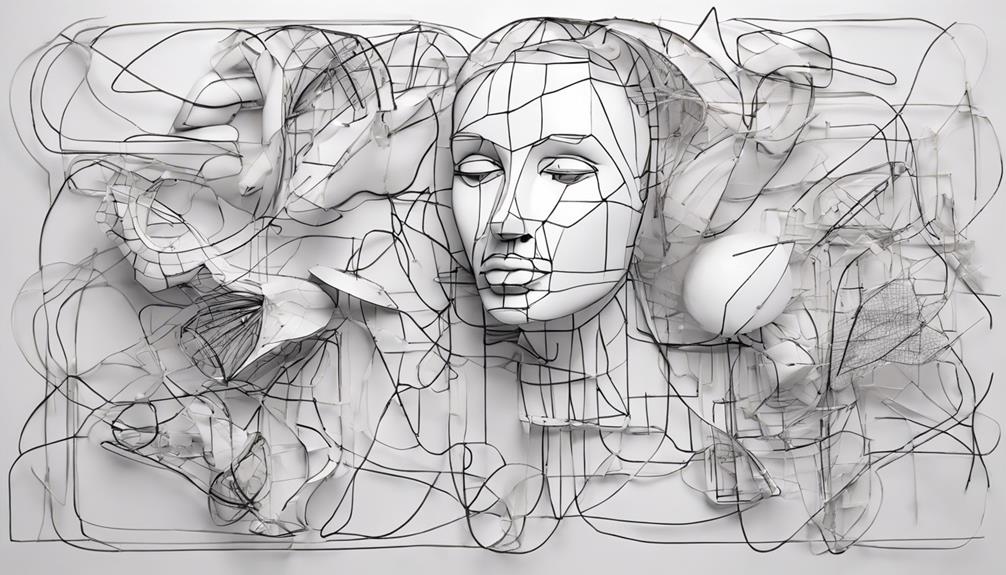
To expand the horizons of artistic expression, artists often challenge traditional norms by exploring unconventional materials and techniques in their creations. This approach encourages artists to break free from traditional constraints and explore their creativity without limitations.
Pushing boundaries in art creation involves experimenting with innovative processes and unique combinations of materials, leading to the development of new styles, movements, and trends in the art world.
- Artists push boundaries by experimenting with unexpected materials like recycled plastics, metal wires, or even organic matter.
- They explore techniques such as 3D printing, digital manipulation, or interactive elements to bring a new dimension to their art.
- Combining contrasting materials like silk and concrete, paper and fabric, or wood and textiles creates visually striking and thought-provoking pieces.
- Pushing boundaries in art creation often results in the fusion of traditional and modern elements, sparking inspiration and expanding artistic horizons for both creators and audiences.
Innovation in Textile Art Forms
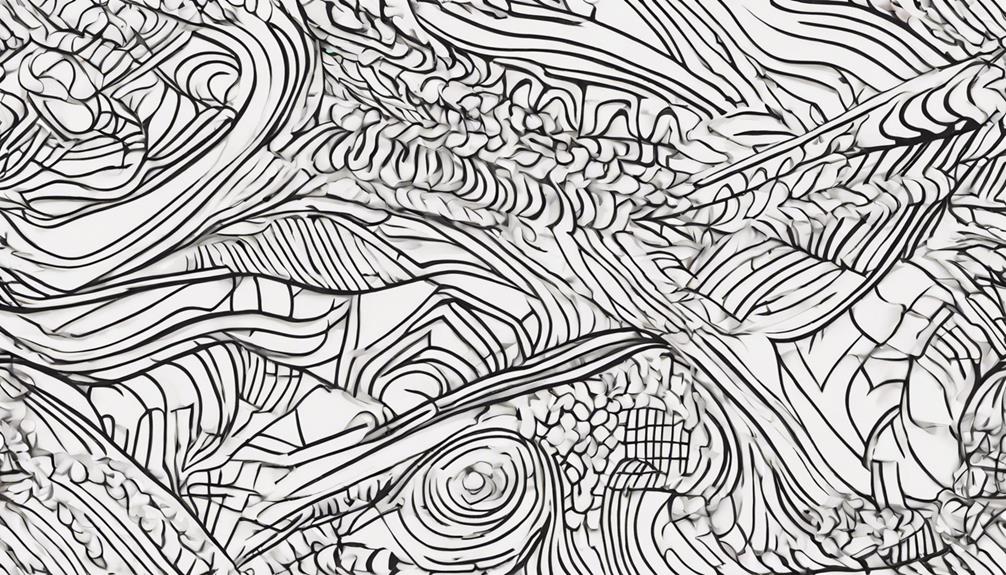
How can artists in the textile art world push boundaries and innovate with new materials and techniques? Innovation in textile art forms is a dynamic process that involves exploring unconventional materials like recycled plastics, metals, and organic matter. By experimenting with these materials, artists can create unique and groundbreaking artworks that challenge traditional notions of textile art.
Additionally, technology plays an essential role in modern textile art innovation, as artists leverage digital design tools, 3D printing, and interactive elements to push the boundaries of creativity.
Collaborations between textile artists and scientists or engineers have resulted in remarkable projects that merge art, science, and technology. These partnerships have led to the development of multidisciplinary artworks that redefine the limits of traditional textile art forms.
Through this innovative approach, artists can create thought-provoking pieces that captivate audiences and spark conversations about the intersection of art and technology in the modern world.
Artistic Interpretations Beyond the Norm
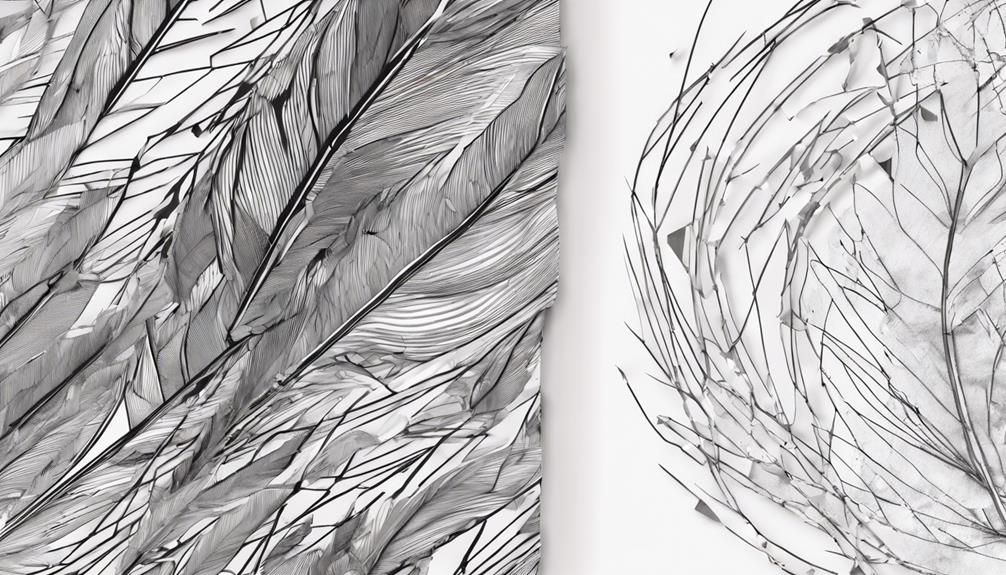
Embrace the unconventional and explore artistic interpretations beyond the norm in the world of textile art. Artists in this domain push boundaries and challenge perceptions through innovative approaches:
- Incorporating unconventional materials like metal, plastic, and found objects to craft unique pieces.
- Exploring non-traditional techniques such as digital printing, laser cutting, and 3D printing to expand the possibilities of textile art.
- Transcending traditional boundaries by integrating performance, sound, and technology elements into fabric-based creations.
- Challenging norms by creating large-scale installations, interactive pieces, and immersive experiences that defy categorization.
These avant-garde interpretations breathe new life into textile art, offering fresh perspectives and opening doors to a world where creativity knows no bounds. By daring to defy the conventional, artists in this space pave the way for exciting dialogues and artistic expressions that captivate and inspire.
Frequently Asked Questions
What Are the Parts of a Textile Art?
Textile art encompasses a wide range of creative possibilities, involving fabric, thread, yarn, beads, and sequins. Artists employ techniques like weaving, embroidery, quilting, felting, and surface design to craft both functional and decorative pieces.
Through intricate stitches, knots, and dyes, unique patterns and textures are achieved. Stories, cultural influences, and personal narratives are often woven into textile art, showcasing the versatility and expressive nature of this craft.
What Is Considered Textile Art?
Textile art is a mesmerizing craft that encompasses weaving, embroidery, quilting, felting, and dyeing. Artists weave stories, culture, and emotions into fabric masterpieces. Functional and decorative, textile art showcases tradition and innovation. Tactile and detailed, it evokes comfort and wonder.
What Are the Features of Textile Art?
Textile art showcases a variety of techniques like embroidery, weaving, quilting, and felting. Artists use fabric, thread, yarn, and fibers to craft intricate pieces.
These artworks can serve functional purposes like clothing or home decor, or be purely decorative as wall hangings or sculptures. With a history dating back centuries, textile art draws on diverse cultural traditions worldwide.
It provides a versatile medium for exploring texture, color, pattern, and form, enabling endless creative possibilities.
What Is Not Considered Fine Art?
When it comes to what isn't considered fine art, think beyond the canvas. Photography, film, and digital art stand apart from traditional textile art in the world of fine art.
Sculpture, installation art, and performance art also carve out their own spaces. While all art forms hold significance, textile art often gets labeled as craft or design due to its practical and ornamental qualities.
Traditional painting, drawing, and printmaking typically take the spotlight in the domain of fine art.
Conclusion
So, now you know that painting on non-textile surfaces isn't considered a part of textile art.
But before you dismiss this art form as not being 'true' textile art, consider the beauty and creativity that can arise from exploring mixed media possibilities.
By pushing boundaries and embracing unconventional artistic combinations, artists are able to innovate and create stunning works that challenge traditional definitions of textile art.
Innovation knows no bounds in the world of art!

